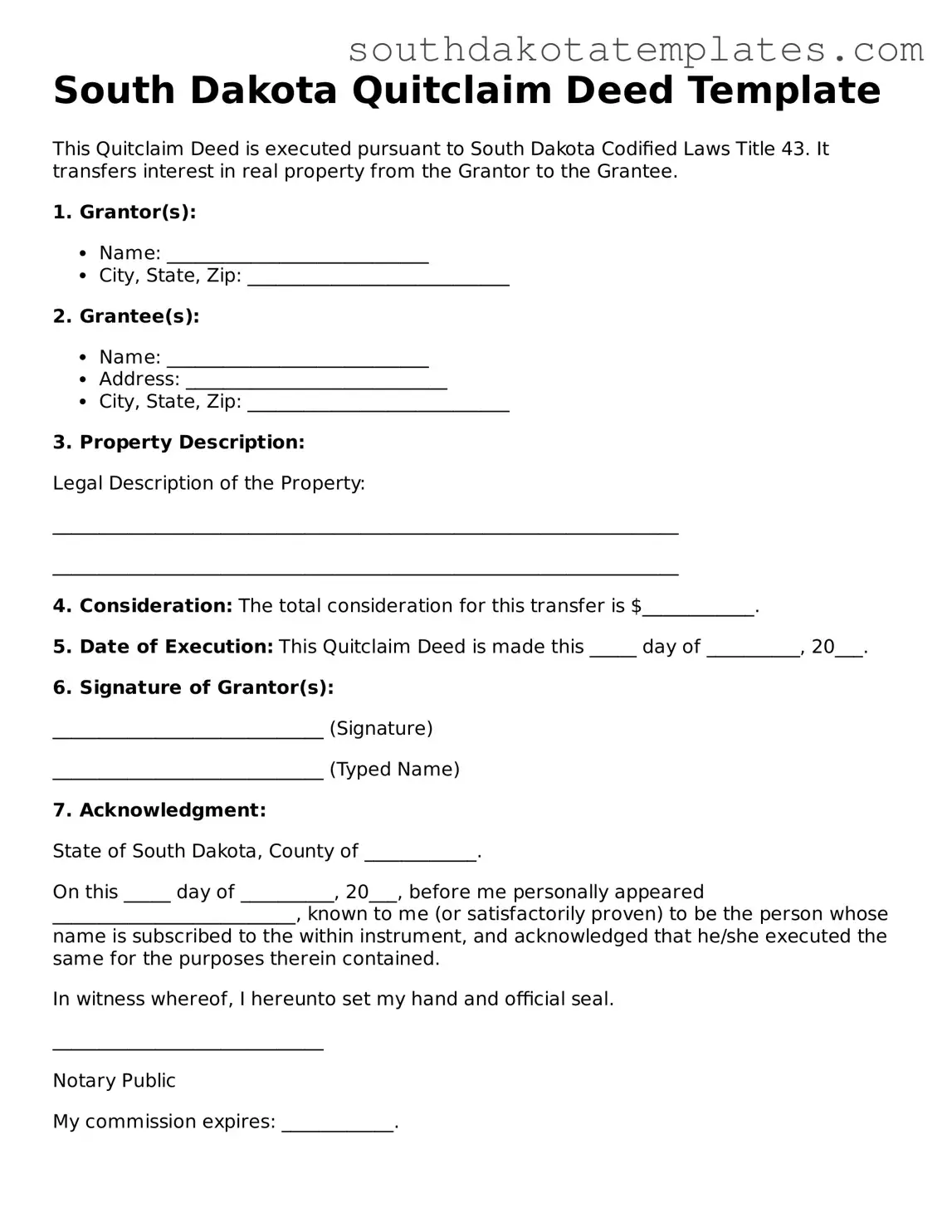The South Dakota Quitclaim Deed form serves as a vital legal document in property transactions, allowing the transfer of real estate ownership from one party to another without any warranties or guarantees regarding the title. This form is particularly useful in situations where the grantor, the person transferring the property, may not have complete knowledge of the title’s status or when the transfer is between family members or close associates. By utilizing a quitclaim deed, the grantor relinquishes any claim they may have to the property, but the recipient, or grantee, receives no assurances about potential liens or encumbrances. This document typically includes essential details such as the names of the parties involved, a legal description of the property, and the date of the transfer. It must be signed by the grantor in the presence of a notary public to ensure its validity. Understanding the implications of a quitclaim deed is crucial, as it can simplify the transfer process but also carries risks for the grantee, who must be aware of the property’s potential legal issues.
